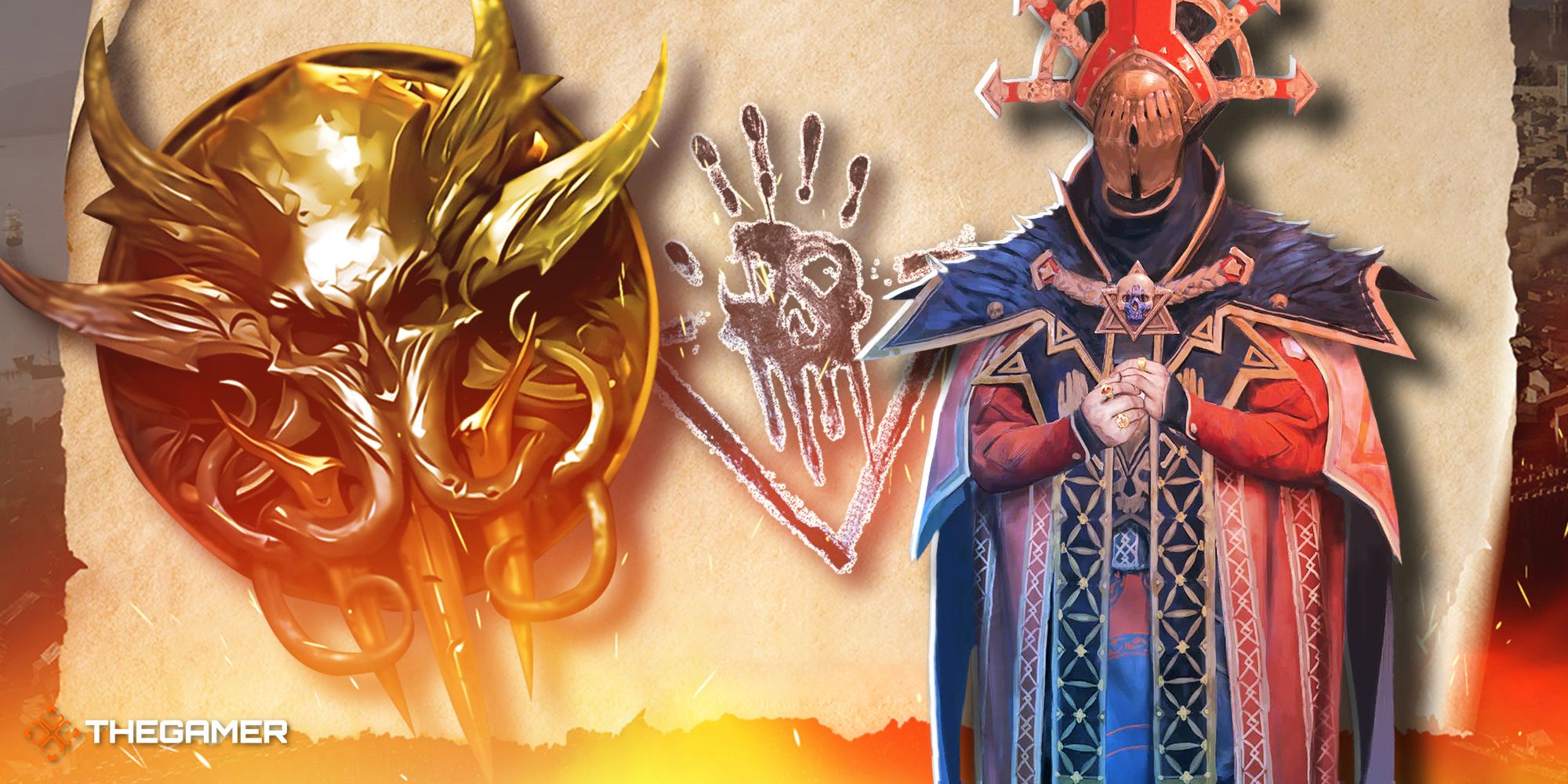
Quick Links
- Who Is The Absolute?
- Who Is Behind The Absolute?
- Is This Part Of The Grand Design?
- Why Does The Absolute Fail In Every Ending?
The Cult of The Absolute is the main antagonist of Baldur’s Gate 3, a group of fanatics that believe in a female deity that promises a new world order. As you crash-land after the tutorial aboard the Nautiloid ship, your quest to get rid of the tadpole in your head gets interrupted by goblins worshiping this deity.
RelatedBaldur's Gate 3: 6 Tips For Charisma-Based Characters
Perform, persuade, cast spells, and talk your way out of any situation with Charisma.
PostsThe cult has a clear hierarchy but an unclear goal. The Absolute communicates directly to her True Souls, and these beings command absolute authority from all followers. While it might seem like simple fanaticism, you’ll soon discover the truth that none within the cult know, and it has more to do with your Illithid captors than it may seem at first glance.
Updated January 20, 2024, by Alfredo Robelo: With more and more people experiencing Baldur's Gate 3 each day, their need for answers about this almighty foe grows. We've decided to update this article, delving into the different endings for the enigmatic deity.
Who Is The Absolute?
The Absolute is no real goddess, but an Elder Brain. These creatures are at the center of the Mind Flayer civilization, controlling all of them as if they were a single entity. Mind Flayers don’t have soul or individuality, they’re merely an extension of their Elder Brain, giving their own brains in sacrifice to augment their leader’s power.
If a Mind Flayer is removed from its colony, what individuality it has stems from its original host.
But an Elder Brain would never start a cult. This one in particular is being controlled by an ancient artifact called The Crown of Karsus. So while the voice being heard by the cultists is the Elder Brain’s, the architects behind The Absolute’s creation are other people entirely. While the Illithid connection to the cult is clear early on, the true masterminds behind it are only revealed at the end of Act two, so beware of major spoilers ahead.
Spoiler Warning!
Who Is Behind The Absolute?
The real masterminds at work are the Chosen of the Dead Three. They are representatives of the three evil gods of death, and while their ultimate goals may differ, these gods often allied themselves to create a world fit for death, murder and strife.
The Chosen in particular are Ketheric Thorm of Myrkul, Enver Gortash of Bane, and Orin of Bhaal. They traveled to Hell to steal The Crown of Karsus, then used their god’s power to alter the purpose of the Crown; instead of simply empowering a creature, it now binds it to them.
RelatedBaldur’s Gate 3: 8 Ways To Deal With The Final Boss
Outsmart a massive brain with these tricks.
PostsAfter subduing the Brain, they had complete control over her Mind Flayer colony. They had them infect hundreds of people with tadpoles, but without turning them into more Mind Flayers. Instead, these people would become the True Souls, people that can be mind controlled from a distance and could infiltrate nearly any place.
This means that the cultists aren’t simple fanatics; they’re being affected by the psychic power of an Elder Brain. The infected True Souls have access to a fraction of these powers, and can force others to do their bidding without question, particularly those branded by the mark of The Absolute.
Is This Part Of The Grand Design?
As you journey through Baldur’s Gate 3, you’ll hear mention of the Grand Design, the plan formed by the Illithid Empire to unify all under their control. Their multistaged plans can only be understood by them, and believe it or not, being enslaved by the Dead Three was part of the plan.
The whole plan was to subconsciously feed this idea of mass control to powerful individuals that could access the Crown of Karsus. Mind Flayers can’t infiltrate Hell all that well, after all. With the Elder Brain 'enslaved', the next step was to slay her captors. There was more than a single angle to achieve this.
The Astral Prism was deliberately placed so an uprising within the Cult’s ranks could happen (and it’s what allows the player to not be controlled), but failing that, the Dead Three were bound to betray each other eventually. Empowered by the Crown, only the combined power of the three Chosen could subdue her, meaning her chains had an expiration date.
Why Does The Absolute Fail In Every Ending?
Among the many endings of Baldur's Gate 3, there isn't a single one where the Netherbrain wins. While this is to be expected of a video game, it does clash with the narrative of this all-knowing entity; how could it hatch a perfect plan to gain absolute power, only to be defeated by a party of four (or less) adventurers?
While there are endings where the Netherbrain survives, it does so while controlled by the player, who is free of Illithid control. It's hard to imagine that being the Grand Design.
You could argue that if the party dies, the Netherbrain wins, but we can't know that for sure; without a group of heroes to help him, the Emperor would certainly lose control of Orpheus, who in turn could be strong enough to defeat the Illithid invasion. He did so once before, after all.
The one working the hardest against the Netherbrain, and who helps you no matter what, is Withers. Considering his likely divine pedigree, and the fact that he foretold the meeting with the player, having a party of powerful adventurers with the necessary tools to defeat the Absolute wasn't a coincidence, but divine intervention.
NextBaldur's Gate 3: Should You Side With Orpheus Or The Emperor?
In Baldur's Gate 3, trust is a perilous quest.
Posts












